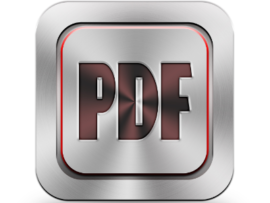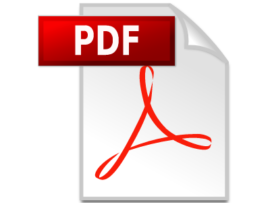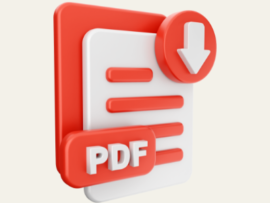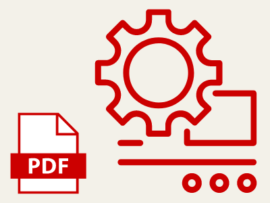
Maximizing Accessibility: Comprehensive Strategies for PDF Remediation
Discover PDF remediation strategies that improve accessibility and ensure compliance with WCAG and Section 508 for inclusive documents.
PDF remediation ensures that your documents are fully accessible and compliant with standards like WCAG and Section 508. By addressing accessibility errors such as incorrect reading order and adding tags to digital elements like images and tables, you make online documents more usable for everyone across many platforms.
Accessible documents not only enhance user experience but also expand your audience and help meet accessibility requirements. Whether working with Word documents, PowerPoint presentations, or PDFs, prioritizing document remediation fosters inclusion while setting your business apart by providing accessible digital content that meets legal obligations.
Maximizing Accessibility: Comprehensive Strategies for PDF Remediation
Understanding PDF Remediation
What is PDF Remediation?
Accessible Documents: The Power of Inclusive PDF Files
Regulatory Compliance for PDF Documents
PDF Accessibility Standards
Web Content Accessibility Guidelines (WCAG)
PDF/UA (PDF/Universal Accessibility)
ISO Standards for PDF Accessibility
Preparing for Remediation
Evaluating Current PDF Accessibility
Tools for Assessing PDF Accessibility
Planning Your Remediation Workflow
Remediation Techniques
Text Equivalents and Alt Text for Visuals
Logical Reading Order
Creating Accessible Links and Tables
Color Contrast and Use of Color
Advanced Techniques and Considerations
Handling Complex Content in PDFs
JavaScript for Enhanced Accessibility
Final Thoughts
Understanding PDF Remediation
PDF remediation involves enhancing PDF documents to ensure they are accessible to all users, including those with disabilities. This process is crucial for compliance with standards and laws that promote inclusive access to information.

What is PDF Remediation?
PDF remediation is the process of making PDF documents accessible and usable for people with disabilities. This may include adding tags, adjusting reading order, and providing alternative text for images. Each of these steps helps ensure that assistive technologies, like screen readers, can properly interpret and convey the document’s content.
The remediation process typically starts with an evaluation of the document's current state. Tools and software can assist in identifying areas that need improvement. After adjustments, a quality assurance check ensures that the document meets accessibility standards.
Accessible Documents: The Power of Inclusive PDF Files
Accessible PDFs are essential for reaching a wider audience. They allow users with visual impairments, hearing issues, and other disabilities to engage with content effectively. By removing barriers, you facilitate better communication and information sharing.
Beyond ethical considerations, accessible PDFs enhance user experience. They can improve your organization's reputation and customer satisfaction. Making your documents accessible helps you connect with a diverse range of users, fostering inclusivity.
Regulatory Compliance for PDF Documents
Adhering to regulatory requirements is vital for organizations handling documents. Laws such as the Americans with Disabilities Act (ADA) and Section 508 require that public-facing materials, including PDFs, be accessible.
Compliance helps you avoid potential legal issues, including lawsuits and fines. Establishing a process for PDF remediation demonstrates a commitment to accessibility. Regular training for your team on best practices increases awareness and reinforces a culture of inclusivity in document management.
PDF Accessibility Standards
PDF accessibility standards ensure that PDF documents are usable by individuals with disabilities. Understanding these standards can help you create accessible PDFs that comply with legal requirements and best practices.
Web Content Accessibility Guidelines (WCAG)
The Web Content Accessibility Guidelines (WCAG) provide a framework for creating accessible web content, including PDFs. These guidelines outline how to make documents perceivable, operable, understandable, and robust for users with disabilities.
Key principles of WCAG include:
- Perceivable: Information must be presented in a way that users can perceive. For PDFs, this means using text alternatives for non-text content and ensuring that color is not the only means of conveying information.
- Operable: Users must be able to navigate and interact with the content. Make sure that your PDFs are keyboard navigable and include sufficient contrast between text and background.
- Understandable: Content must be clear and understandable. Use straightforward language and provide help or instructions where necessary.
Adhering to WCAG ensures that your PDFs are accessible to a broader audience.
PDF/UA (PDF/Universal Accessibility)
PDF/UA is a specific standard designed to make PDF documents accessible. It is an ISO standard that provides requirements for creating and structuring PDF documents to ensure they are usable by people with disabilities.
Key requirements of PDF/UA include:
- Logical reading order: The content must have a defined order that makes sense to users relying on assistive technologies.
- Tags and structure: PDFs must include proper tagging that reflects the document’s structure, including headings, paragraphs, and lists.
- Document properties: Ensure that the document has metadata, such as title and author, to help assistive technology users understand the content.
Implementing PDF/UA standards helps ensure compliance with accessibility laws and improves usability.

ISO Standards for PDF Accessibility
Various ISO standards address PDF accessibility, providing a framework for compliance and best practices. ISO 32000 is the official standard for PDF technology, defining the structure of PDF files.
Some relevant ISO standards include:
- ISO 14289 (PDF/UA): This standard specifies how to create accessible PDF documents and ensures that they are compatible with assistive technology.
- ISO 24751: Focuses on personalized accessibility in information systems, which can be applied to creating PDF documents.
Following these standards not only benefits users but also helps organizations meet legal obligations for accessibility.
Preparing for Remediation
Effective remediation starts with a clear understanding of the current PDF's accessibility status. It involves evaluating existing documents, selecting appropriate tools, and planning a structured workflow.
Evaluating Current PDF Accessibility
Begin by assessing how accessible your PDFs are. Use established accessibility standards, such as WCAG (Web Content Accessibility Guidelines) and PDF/UA (PDF Universal Accessibility), as benchmarks. Identify common issues like missing tags, improper use of headings, and lack of alternative text for images.
You can conduct a manual review or utilize software tools. A checklist can help you systematically evaluate each document. For example, check if your PDFs have:
- Proper document structure (headings)
- Descriptive alt text for images
- Tagged content for screen readers
Recognizing these issues lays the groundwork for effective remediation.
Tools for Assessing PDF Accessibility
Selecting the right tools can significantly enhance your assessment process. Evaluate both automated and manual tools to analyze your PDFs thoroughly.
Automated Tools: Tools like Adobe Acrobat Pro, Axe PDF, and PAC 3 can swiftly scan documents and identify potential accessibility issues.
Manual Techniques: Manual checks are crucial for nuanced evaluations. Review documents with screen readers to test actual user experience.
Maintain an inventory of tools and their features. Track which tools provide the best insights for your specific needs, ensuring a comprehensive analysis.
Planning Your Remediation Workflow
Your remediation workflow should be systematic, making it easier to address identified issues. Start by creating a project plan that outlines each step. Define roles and responsibilities if you're working in a team.
Consider using a checklist that includes:
- Prioritization: Rank issues based on severity and user impact.
- Remediation Steps: Detail tasks, such as tagging images or correcting heading levels.
- Review Process: Plan for peer review to validate changes.
Aim for a cycle of continuous improvement. Regularly update your workflow based on feedback and new accessibility standards, ensuring that your remediation efforts remain relevant and effective.
Remediation Techniques
Effective PDF remediation techniques enhance accessibility for all users. Focus on text equivalents, reading order, link structure, and color usage to ensure compliance with accessibility standards.
Text Equivalents and Alt Text for Visuals
Providing text equivalents and alt text is crucial for users who rely on assistive technologies. Describe images succinctly, focusing on their function and context.
For example, instead of a vague "picture of a tree," you might use "oak tree in autumn with red and gold leaves."
Alt text should be concise, typically around 125 characters, to maintain clarity without overwhelming users. Screen readers use this text to convey the image's content, helping users with visual impairments to understand the document's message fully.
Logical Reading Order
Establishing a logical reading order is essential for screen readers to navigate documents. Arrange content sequentially, ensuring that headings, text, and images follow a coherent path.
Use PDF tagging features to define the structure. Proper tags such as headings (H1, H2), paragraphs, and lists guide assistive technologies effectively.
You can easily check and adjust the reading order in Adobe Acrobat by using the "Reading Order" tool to ensure seamless navigation through your content.

Creating Accessible Links and Tables
Accessible links and tables enhance user interactions and comprehension. For links, provide meaningful text that describes the destination rather than generic terms like "click here."
For instance, use "Read our accessibility policy" instead.
When creating tables, always include headers for both rows and columns. This practice allows screen readers to interpret the table accurately, conveying the relationship between data points clearly.
Keep tables simple to avoid unnecessary complexity, which can confuse users and detract from their experience.
Color Contrast and Use of Color
Color contrast and the strategic use of color are essential for readability. Ensure that text stands out against the background, aiming for a contrast ratio of at least 4.5:1 for normal text and 3:1 for large text.
Using tools like WebAIM's Contrast Checker can help you assess this.
Avoid relying solely on color to convey important information. For example, use patterns or labels along with color in graphs to cater to color-blind users, ensuring that all individuals can access and understand your content.
Advanced Techniques and Considerations
Advanced techniques in PDF remediation focus on ensuring that all content types meet accessibility standards. Your approach can significantly impact user experience, especially for individuals with disabilities. Below are key areas to consider.
Handling Complex Content in PDFs
When working with complex layouts, such as multi-column designs or embedded graphics, it is crucial to maintain a logical reading order. Use tagging to structure the content properly.
- Ensure that headings follow a clear hierarchy.
- Use logical flow when ordering content, often from top to bottom, left to right.
- If images are included, make sure to provide descriptive alt text for each graphic. This helps screen readers convey meaning to users.
Also, consider using a table of contents for lengthy documents. This can significantly enhance navigation for readers. Tools like Adobe Acrobat offer functionalities to verify the reading order and structure of tagged PDFs.
JavaScript for Enhanced Accessibility
Integrating JavaScript can significantly improve the accessibility of interactive elements within your PDFs. For instance, form validations can guide users in filling out fields properly.
Key points to implement include:
- Trigger alerts when form fields are incorrectly filled out.
- Ensure that keyboard navigation works smoothly with all interactive elements.
- Provide clear instructions or tooltips that appear when users focus on fields.
Testing is essential, as not all screen readers handle JavaScript uniformly. Be aware that some users may have JavaScript disabled, so ensure essential functionalities are available without it.
PDF Forms Accessibility
PDF forms must adhere to accessibility guidelines to support users with disabilities comfortably. Start by ensuring that the forms are fully navigable via a keyboard.
- Clearly label all fields with descriptive text.
- Utilize tab order to allow users to navigate logically from one field to another.
- Ensure that error messages are displayed prominently and descriptively.
Incorporating checkpoints for accessibility compliance can streamline this process. Use tools that validate PDF forms against standards such as WCAG and Section 508 to ensure full compliance.
Testing and Validating Remediated PDFs
Testing and validating remediated PDFs is crucial to ensure accessibility and compliance. This process involves manual testing, the use of automated tools, and user testing with assistive technologies to confirm that the document meets accessibility standards.

Manual Testing Strategies
Manual testing allows you to evaluate the remediated PDF against accessibility guidelines. Start by checking the document structure using a screen reader to navigate through headings and content. Verify that all images have alternative text and that tables are properly formatted with headers.
You can utilize tools like Adobe Acrobat’s Accessibility Check to identify potential issues. Pay attention to color contrast and make sure the text is readable. Engaging individuals with disabilities for feedback provides real-world insight. Use a checklist that includes key criteria from the WCAG (Web Content Accessibility Guidelines) to ensure thorough testing.
Use of Automated Testing Tools
Automated testing tools enhance the efficiency of the validation process. Tools like WAVE, AXE, and PDF Accessibility Checker can quickly identify accessibility issues. These tools scan for common problems such as missing alt text, improper heading structure, and contrast issues.
After running these tools, manually review the flagged items. Automated testing cannot replace human judgment in evaluating context and usability. Assign a score or report on the level of accessibility, using the results to prioritize further remediation efforts.
User Testing with Assistive Technology
User testing with assistive technologies provides invaluable feedback on the PDF’s usability. Engage users who rely on screen readers, magnification software, or other assistive devices. Observing how they interact with the document can highlight usability issues that may not appear in automated tests.
Facilitate sessions where users complete specific tasks. Document their experiences and challenges to gather actionable insights. This hands-on feedback informs further improvements and ensures that the PDF functions as intended for everyone.
Training and Best Practices for Continuous Compliance
Effective training is vital for maintaining compliance. Ensure your staff understands the importance of accessibility standards such as WCAG (Web Content Accessibility Guidelines).
Host workshops that cover best practices for creating accessible PDFs. Focus on topics such as using proper tagging, descriptions for images, and correct document structure.
Implement a feedback mechanism that encourages employees to report accessibility issues. Regularly review this feedback to identify areas for improvement.
By fostering a culture of compliance through training, your team will be better equipped to maintain high standards in document accessibility and usability.
Remediation Services and Software
Remediation services and software are essential tools for ensuring accessibility compliance of PDF documents. Understanding their functionalities and selecting the right solutions is crucial for effective remediation.
Overview of Remediation Software
Remediation software is designed to help you improve the accessibility of PDF documents by identifying and correcting issues. Key features often include automated scanning, tagging tools, and compliance checkers.
Popular software options include:
- Adobe Acrobat Pro: Offers powerful tools for tagging and editing PDFs.
- CommonLook: Provides specialized functions for compliance with standards like WCAG and PDF/UA.
- Equidox: Simplifies the remediation process with an intuitive interface.
When selecting software, consider factors such as ease of use, customization options, and the ability to generate reports on compliance status.
Selecting Professional Remediation Services
Choosing professional remediation services can significantly streamline the accessibility process. These services typically include document analysis, manual remediation, and post-remediation audits.
When selecting a service provider, evaluate the following:
- Experience: Look for providers with a proven track record in PDF accessibility.
- Certifications: Ensure they are certified in accessibility standards.
- Client Reviews: Research feedback from previous clients to gauge reliability.
Engaging in a professional service can save time and resources while ensuring compliance with legal requirements, ultimately enhancing the usability of your PDFs for all users.
Iterators LLC: Driving Accessibility and Information Equity with Expert Remediation Services
Iterators LLC is dedicated to enhancing accessibility and promoting information equity. With a focus on high-quality remediation services, the company partners with organizations to ensure compliance and improved usability for all users.
About Iterators
Founded in 2017, Iterators LLC is a Boston-based, SBA-certified Women-Owned Small Business (EDWOSB) committed to promoting accessibility and information equity. By partnering with organizations across industries, we help businesses of all sizes ensure that their digital platforms, documents, and services are inclusive and accessible to people of all abilities.
We set ourselves apart with a strong focus on accessibility compliance, user experience, and attention to detail. Iterators deliver customized remediation services to ensure that organizations not only meet regulatory standards but also create a more inclusive environment for their users. Our commitment to information equity extends beyond basic compliance, as we work diligently to enhance usability, improve customer engagement, and ensure our clients' products and services are accessible to all.

Accessibility Testing & PDF Remediation
Your projects benefit from Iterators' expertise in accessibility testing and PDF remediation. As Trusted Testers certified by the Department of Homeland Security, they adhere to the Web Content Accessibility Guidelines (WCAG) 2.2. This ensures that your documents and platforms are accessible to everyone, regardless of ability.
Our process includes generating the Voluntary Product Accessibility Template (VPAT) and the Accessibility Conformance Report (ACR) to clearly outline compliance status. For PDF remediation, tagged files are created to facilitate compatibility with screen readers, providing a usable structure without visible changes. This process promotes a seamless experience and reduces liability risks associated with accessibility failures.
Software Testing Services
Iterators offer a broad range of software testing services, conducted by skilled ISTQB-certified testers. Our services are pivotal in achieving compliance with the Americans with Disabilities Act (ADA).
Our testers utilize cutting-edge methodologies to assess mobile applications and websites, ensuring functionality and responsive design across various platforms. With a commitment to rigorous testing, Iterators help you deliver products that meet the highest standards of quality and user experience, safeguarding your organization from compliance issues.
By partnering with Iterators, businesses can ensure that their software, documents, and platforms meet both accessibility standards and user expectations. Our comprehensive services allow organizations to confidently address any accessibility challenges and deliver high-quality, inclusive digital content.
Final Thoughts
Remediation services are essential for businesses seeking to comply with accessibility standards, especially when addressing inaccessible documents such as Word document, PowerPoint presentation, or content on a website. These services enhance the user experience by ensuring the correct reading order and improving various elements, making content accessible to everyone. Investing in remediation is not just about compliance; it reflects a commitment to inclusivity and providing additional information in accessible formats.
Iterators stand out as a reliable partner in this space. They provide high-quality remediation and software testing services tailored to your needs. With experienced professionals and a customer-focused approach, you can trust them to deliver effective solutions.
Consider making accessibility a priority in your operations. By investing in remediation services, you can future-proof your business and foster an inclusive environment. Embrace the importance of accessibility today.
